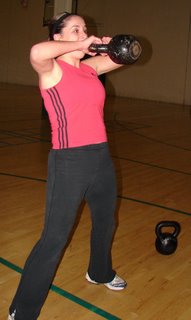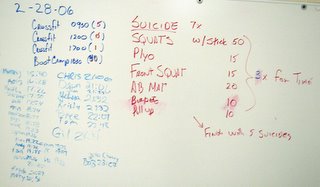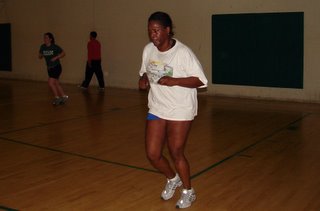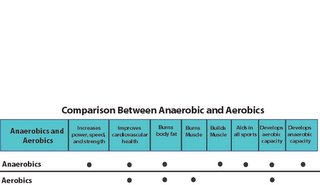OLYMPIC WEIGHTLIFTING AND THE YOUNGATHLETE by Tim Swords
Many years ago I got a phone call from a lady who asked about weightlifting. She said she had an 8 year old son who wasn’t in very good shape and that she was concerned about his overall health and self esteem. She said that she had contacted several personal trainers, but no one would touch him with a 10 foot pole due to liability reasons. I told her that was probably the best thing because kids need to develop good habits from the start and especially if he wanted to be involved in other sports. I told her that I had trained several kids her son’s age and that I would be happy to work with him. Her son went on to compete in the Junior Nationals and earn a college football scholarship. He doesn’t have any problems with his self esteem these days.
Before I go off into my philosophy for training young kids, I would like to mention a few things about the misconceptions parents and coaches have about Weightlifting and its dangers. I can say from personal experience with middle school and high school football coaches that when players start lifting weights over their heads, it puts the fear of God in them! They are scared to death when it comes to their athletes doing the snatch or the clean and jerk or any of their variations. Maybe because the coaches can’t adequately teach these lifts and are intimidated by them. Maybe they are afraid of injuring their players. There could be several other reasons for this behavior. In fact the injury record in weightlifting compares very favorably with other sports and has proven to be much safer than sports that are taught as a part of the physical education classes all across America. Statistics show that weightlifting is 30 times safer than Soccer. There are thousands of young kids playing Soccer everyday without a second thought from parents or their coaches.
The second thing that comes to mind is the question about the proper age to start kids. Here are the concerns I hear from parents when we talk about Olympic lifting.
1. Can weightlifting damage my child’s growth plates? In reality bone mass is gained as a result of resistance training during childhood. These were the findings of a NSCA study.
2. Can the forces of weightlifting cause injury? This kind of goes back to the high school coaches who won’t allow their players to put weights overhead. Most these injuries are due to poor coaching and improper training methods. Even when talking about prepuberal athletes, I say the forces the body endures while playing recreational sports exceed that of a proper strength training program. Remember we are not doing maximal lifts with kids that are just starting a strength training program!
3. Why should my kids get involved in a lifting program before they reach puberty? Are there any benefits at their age? I have seen major increases in flexibility, better posture, improved vertical and long jumping ability, improved running speed in kids that I have coached over the years. These kids were all under 11 years of age when they started.
I do believe that these are all legitimate concerns for parents who don’t have the understanding of the sport of weightlifting and its benefits for kids. There isn’t a lot of documentation out there available to read about Olympic lifting benefiting the young athlete before they reach puberty.
Now its time for me to answer the most asked question of all. What is the right age to start weightlifting? In my opinion as a coach who has been training kids for many years is, when kids start playing sports they can start weightlifting. First of all you have start slowly and you have to learn the proper technique from a certified coach. Proper technique means proper posture. Proper positions are learned once the athletes can pass certain physical tests.
Most of the young kids that I start out have never lifted weights in their life, let alone Olympic lifting. So they aren’t prepared for any rigorous training at this point. I have a 3 part process I use with kids when they first start training with me. The first phase of training is called the “Developmental Phase”. During the Developmental Phase we work on body position with a stick. The stick work is done at all the positions that they can properly achieve. I don’t want to develop bad habits so if they don’t have the strength and flexibility to get into the positions properly then they will work where they can as long as they are showing good form. Also at this stage the kids work a lot on flexibility. I have a flexibility program that they are supposed to do at least twice a day. Here are the exercises they perform during the Developmental Phase of training.
1. Body Weight Calisthenics- Squats (deep knee bends) as low as flexibility allows, push ups, stomach and other core work, jumps for height.
2. Resistance Training- up-right rows, military press (aluminum bar), hyper extensions, shrugs, Med ball work, and position work with the stick or the aluminum bar.
3. Sprinting – on the days we don’t lift.
4. General activities and other sports.
The second part or phase 2 is called the “Intermediate Phase” of training. Once the young athlete has shown that he/she can handle phase 1 and perform these exercises using good posture, proper breathing, and improved flexibility and prove they can do the calisthenics properly, then they will advance to the Intermediate Phase.
During the Intermediate Phase we will try to increase the level of body awareness with a greater emphasis on the Olympic lifts. We start using the bar for all our exercises and I start Teaching the Olympic lifts from the top position. At this stage our training is done from the hang with straps unless the young athlete shows that they have the strength and flexibility to work at the below the knee level. At this point I will start teaching the pull from below the knees.Here are the exercises they perform during the “Intermediate Phase”.
1. Basic Resistance Work- up-right rows, shrugs, light squats (front and back), overhead squats, military press, push press, hyperextensions and stage pulls.
2. Dynamic Resistance Work- power pulls (snatch and clean grip), Hang snatch, hang clean, high pulls and jerks.
3. Body Weight Calisthenics- push ups, core work, jumping up onto a box, bounding and assisted chin ups.4. Sprinting on off days.
5. General activities and other sports.
The third and last phase of training is the “Advanced Phase”. In this phase we start training the competitive lifts and we start focusing on mastering the technique and becoming efficient weightlifters. Before athletes train the full Olympic lifts they must have adequate strength and flexibility to the full range of motion. I have had kids get to this point in their training in a few months and I have some that didn’t get to this point for quite a bit longer. Kids develop at different rates and I am not going to push an immature athlete beyond their capabilities. I make sure that they can handle the stresses of the more complex training regime of this phase before we start doing the full lifts and their combinations. My goal is to make them better, not to get them hurt!
During the “Advanced Phase” we are learning the full lifts. It’s not important to handle big weights. It is important to learn the skill. I don’t let kids 11 years old and under do max attempts. I let kids over 11 who have been training for several years go for it as long as the have mastered the technique. I don’t let this happen very often, but I think a good coach knows what his athletes are capable of doing on the platform. If they don’t then they shouldn’t be coaching youth weightlifting.Here are the exercises in the “Advanced Phase”
1. Basic Resistance Work- up-right rows, shrugs, RDL’s , hyperextensions, reverse hypers, Stage pulls (light), bench press.
2. Dynamic Work- snatch and clean&jerk and all the different stages, snatch balance, behind the neck jerks.
3. Body Weight Calisthenics- push ups, core work and weighted crunches, jumping exercise (variations) pull ups and chin ups.
4. Sprinting on off days
5. General activities and other sports.I have been coaching youth weightlifting since I was a college strength coach in the early 1980’s.
Olympic lifting has always been the meat of my training program. This program has been designed to increase the strength, power and athletic performance in children. This program is safe, even though we train in a small facility that hosts up to 20 lifters at any given time. I have never had a major injury in over 20 years of coaching Olympic weightlifting. My program eliminates injuries, it doesn’t cause them. I critique each kid and take a common sense look at everyone and work towards improving their individual needs. There are many other benefits to this type of training, but my main focus is on increased athletic performance.Before I close I would like to say that when you are working with young kids you have to make it fun. Coach by using positive reinforcement, don’t be negative. Make them work, be a motivator and show them that you care and they’ll keep on coming back.
TIM SWORDS
HEAD COACH, TEAM HOUSTON




 February closes with a rocking good class. Forty participants doing a pretty well rounded workout.
February closes with a rocking good class. Forty participants doing a pretty well rounded workout.  February rock star of the month Dorothy. She made it to 13 classes. Boot Camp is a low cost alternative to personal training. Dorothy made sure she got FULL BENEFIT this month. Rock on!
February rock star of the month Dorothy. She made it to 13 classes. Boot Camp is a low cost alternative to personal training. Dorothy made sure she got FULL BENEFIT this month. Rock on! Dawn has come miles in improving her squat. Great job!
Dawn has come miles in improving her squat. Great job!